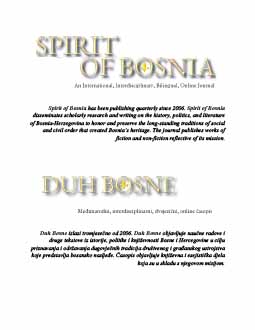
We kindly inform you that, as long as the subject affiliation of our 300.000+ articles is in progress, you might get unsufficient or no results on your third level or second level search. In this case, please broaden your search criteria.

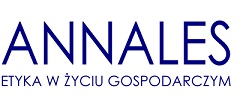
The commodity exchange is regarded as one of the key institutions of market economy. Stockbrokers were a truly essential group of workers of the commodity exchanges. It was on the level of their organization and professional ethics that depended the level of efficient functioning of this institution. The basic law regulations, orders and stock charters were traced in this paper, which marked principles of stockbrokers’ activity. These principles were considered from the point of view of the ethical norms establishing the contemporary ethics of economic life. My special attention was concentrated on these principles of stockbrokers’ activities which concern the way of their appointing, rights as well as duties. „Ethical aspects” of stockbrokers’ activity on the Polish commodity exchanges were traced for the period from 1921 to the 1950. In initial period of the second Republic of Poland acted six commodities exchanges. In 1948 year stockbrokers institution was done away. The comparatively quick unification of exchange law by the government of independent Poland was the expression of understanding the importance which was fulfilled in economy by the institution of commodity exchange. In turn, issuing separate regulations for stockbrokers was proof of high position held by this group in the structure of the basic organs of a commodity exchange.
More...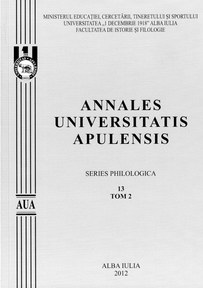
As the surrounding social environment becomes ever more diversified and complex, the individuals’ and also the communities’ typical reaction is to attempt to give meaning to and organise the stimuli with which they constantly come into contact. Such an undertaking involves a correct identification and an accurate comprehension of the most pervasive and representative characteristics of a given group of people, the manifestation of this ability leading to the creation of a coherent set of boundaries between “us” and “them”. The present study deals with precisely this type of relations, both from a theoretical and a methodological perspective. Although it focuses on history and historical writing, the article brings to the reader’s attention and briefly discusses a series of concepts and theories which can be (and sometimes have been) successfully applied in other social sciences as well. For this purpose, I cite the works of a number of renowned historians, such as Paul Ricoeur, Robert Darnton, Peter Burke, Roger Chartier, Michelle Vovelle, Georges Duby or Jean-Pierre Rioux. These authors’ innovative (for their time) and extremely well argumented opinions were thus systematised, summarised and integrated into what was designed as a comprehensive whole, with the purpose of yielding a pertinent approach to studying all sorts of identity related issues. After emphasising a number of cognitive and sometimes emotional phenomena associated with discovering and/or with writing about past events, I also briefly sketch the manner in which various factors impact upon the work of historians. I refer to such concepts as memory and forgetfulness, time and space, or fiction and fictionalisation. These types of influences mostly operate at an implicit level and therefore unconsciously affect the quality and trustworthiness of historical texts. Within this framework and once again making reference to the above mentioned authors, the present article argues that one cannot speak about a mere label modification, but about a qualitative evolution from the history of mentalities to the history of representations and, more recently, to cultural history. Even if the theoretical debates around the use and meaning of these concepts do not allow us to view this transformation as a paradigm shift in the sense defined by Thomas Kuhn, the fact that social sciences have undergone major changes in the last half century is an undeniable truth.
More...
The present paper presents some key features of the postmodernist aproach to the medieval literature, in respect with the principles exposed by the New Criticism wave. The first emphasis is on the importance of the interdisciplinary studies in the context of the revival of medieval literature and the use of some modern critical intruments in order to reshape the past as textual community. In this respect, the concepts exposed by Mihail Bahtin in his works are of major concern in the analysis of medieval literature. Concepts like heteroglossia, dialogic imagination, plurality, multivocalism are connected with the work of Geoffrey Chaucer, a fourteenth century English writer. His major work, The Canterbury Tales, offers a reflection of the turbulent society of his age and is constructed upon a diversity of social voices. This study represents a plea for the reconstruction of the medieval texts in terms of modern critical inquiries.
More...
[Monica Lovinescu between the Initial Criticism Domain and the Issue of Totalitarianism] Culture represents the substance and the space of confrontation between the disclosed allocution and the propaganda of the communist regime. For more than three decades, behind the microphone of the Free Europe radio, Monica Lovinescu points to the Romanian society dominant thinking and develops the reader’s horizon of expectation. The totalitarianism controls and filters the broadcasted information in order to obtain an efficient political and ideological propaganda. Consequently, the media is clamed by both sides, because it is extremely important in the society’s political and cultural mechanism. In a democratic system, the politicians, the media and the public constitute a group submitted to power changes: they do not always know who wins and who looses. The communism strains the media to accept and to promote a certain kind of speech: impersonal, strictly informative and propagandistic. The media impact on the society depends on the suggested image, not necessarily on the real one. In this context, Monica Lovinescu speaks about the reappearing of the Romanian literature after the de-Stalinisation, about the evolution of culture and intellectuality, about the problems of Romania and the Romanians, about the censorship and the Security Service. This paper presents and comments the issue of the European and Romanian spiritual values as seen in Unde scurte (The Short Waves): six tomes that reproduce radio shows recorded between 1961 and 1995. Monica Lovinescu defends the pluralism in Romanian culture and politics, and her essays contribute to the debate on cultural values. She understands the deep nature of the communism and she tries to impose the right to normality, to sustain the truth. Undele scurte (The Short Waves) forms a moral guide with an educational mission. Its purpose is multiple: the rectification of the characters from the social and cultural scene, the improvement of the fight against politics and lack of aesthetics, the strengthening of Romanian culture, even if it is done from another geographical space. The chronics have a certain cruel sincerity that may sometimes appear as mean. This attitude is a sign of originality, of non stereotype thinking. The author does not embrace the ideas of her group if they do not convince or fit her. She denies the form in order to accept the style and she contradicts the mentality and taste of the present. She writes with sincerity what she thinks and lives.
More...
A transcript of the Gospel, made in the town of Svrljig (Eastern Serbia) in 1279, remained preserved in fragments of some eleven sheets of parchment. The parchments were discovered in 1866 in the church premises in the village of lzvor (near Svrljig). They have been kept in the Serbian Academy of Sciences and Arts ever since. Many have written about those Passages and analyzed their linguistic and graphic features, among them: M. Đ. Milićević, J. Šafarik, St. Novaković, G. A. Voskresensky, Lj. Stojanović, and G. A. Ilynsky. The Passages represent an important document of cultural (religious) history. They were written in the Serbian version of Old Church Slavic. They have been dated (1279) and localized by the note of Vojsilo Gramatik, one of its transcribers, which was found in the eleventh sheet of the preserved parchments. The note makes the Passages even more valuable to the science with regard to their antiquity. The Workshop For Ethnological And Cultural Studies in Svrljig published the Svrljig Gospel Passages (Svrljig - Niš, 1994) mostly with the help of its founder and manager Professor Sreten Petrović, Ph. D. The deluxe edition of the Passages contains the introductory note of the editor (S. Petrović) and a detailed study of the expounder, Nikola Rodić, MA, who gave the transcript (the new reading) of the Passages, apart from their background, description of graphic features and analysis of linguistic characteristics. This worked-out text is displayed alongside with the photoprints of each original sheet.
More...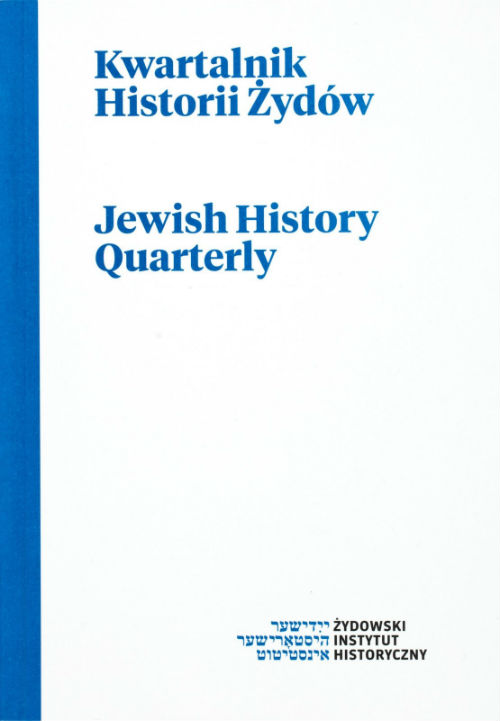
The Haggadah is read out during the seder dinners with which the Pesach holiday begins. Its text assumed its final shape gradually over several centuries and only became a separate text in the 13th century (until them it was incorporated in the prayer book). Between the 14th and 16th century this was one of the most frequently copied and embellished texts. At first, it was just adorned by the simplest of motifs, which followed from the fact that its oldest examples originated in a Muslim environment, where figurative presentations were forbidden. At a later time, illuminated codices with the text of the Haggadah were produced in Jewish communities all over Europe, and the ornaments in the haggadot gradually got richer and richer. Not only were they supposed to adorn the manuscripts, but also to facilitate locating a specific passage in the text and help the children concentrate during the night seder feast. Over the ages, an iconographic programme evolved, characteristics of this type of manuscripts, in which it is possible to identify four basic groups of illustrations: ones concerning the Haggadah text proper, ones dealing with the Pesach holiday, ones of a biblical nature and those on eschatological subjects. The graphic side is one of the distinguishing marks of the three main types of such manuscripts: Ashkenazi, Sephardic and Italian ones. The article briefly examines examples of such manuscripts and the chief differences between these types, e.g., from the point of view of the placement of text and ornamentation on the page.
More...
The paper deals with the plurality of the German classical ideals concerning Greek antiquity. It asks, how other interpretations competed with Winckelmann’s idea of Hellenism and how they regarded Oriental Antiquity. Hamann regarded Greek antiquity as an epoche in which the original power of language was practiced. Hamann’ relation to Oriental and Greek antiquity was auditory, based on rhetoric and sophistic thinking. His younger fellow, Herder maintained only the Greek element as a basis for the German national culture. This led to a monistic universalistic tendency to which the Romantics and especially Novalis, Schlegel and Tieck’s Cultural-Catholicism also contributed. The Eastern legacy then became newly conceptualised from an Aryan traditional-creational viewpoint, with the discovery of the Persian and Sanskrit cultures.
More...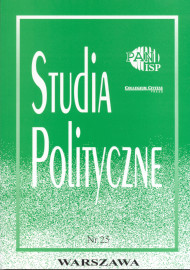
The author presents the determinants and basic problems of existence of Polish science and culture in the period preceding the turbulent year of 1968, as well as the events directly related to this key date in Poland’s history. The departure, by Mr Gomułka’s team, from the ‘achievements’ of the Polish October of ’56, that is, from certain concessions of a democratic nature, evoked deep disappointment in both institutions and the scientific, cultural and artistic milieus, and this, in time, led to attempts at protest. The tightening of censorship, restrictions in the allocation of printing paper for books and periodicals, the closing down of newspapers, weeklies and magazines ‘inconvenient’ from the point of view of the authorities, the lack of opportunities for dialogue and constructive criticism, repressions against those who openly expressed their independent opinions, and the systematic surveillance of the scientific and creative milieus, were only a part of operations undertaken by the PRP powers-that-be in the second half of the 1960s. It was the shortcomings of the centralised, command economy and the growing shortages in the shops which resulted in Poland’s situation becoming unstable and threatening to explode. The role of the fuse was performed by the events of March 1968, which were enacted in the cultural and scientific milieus: the turbulent meetings of Warsaw’s men and women of letters, the removal of Adam Mickiewicz’s Dziady (Forefathers’ Eve) from the National Theatre’s repertoire, the manifestation in protest against the removal which followed the last performance, and finally, the students’ rally in the courtyard of Warsaw University, as well as the strikes on the part of students and the personnel of higher education institutions in Warsaw and other Polish cities as the continuation of that rally. It was after these events, when the party had launched an anti-intelligentsia campaign, supplemented with an anti-Semite witch hunt and smear campaign, unleashed by the ‘partisans’ faction around Mieczysław Moczar and by Mr Władysław Gomułka himself. An ‘ethnic criterion’ was applied to the Polish scientific and cultural milieus, eliminating, in the climate of a media witch hunt, renowned academic teachers, scholars, film-makers, publishers, journalists, men and women of letters of Jewish extraction and, finally, driving them to emigrate from Poland. It was in this period that Polish culture and science toughened up and delivered itself of illusions; however, it also suffered losses, the recouping of which would be a painful process and, subsequently, would subsequently take its full toll of years.
More...
In this article, based on the second book of Galen’s De placitis Hippocratis et Platonis, we analyze scientific method of the famous anatomist and philosopher. We discuss experimental, logical and philosophical argumentation that Galen employs in his proof that the rational part of the soul situated in human brain. We study his polemics with Chrysippus, who declares that the rational part of the soul is located in the heart, and conclude that the treatise by Galen sets the standards of scientific studies in antiquity, which combines medical, philosophical and moral components.
More...
An investigation of the views on space and time of the Russian polymath Pavel Florensky (1882-1937). After a brief account of his life, I study Florensky’s conception of time in The Meaning of Idealism (1914), where he first confronts Einstein’s theory of special relativity, comparing it to Plato’s metaphor of the Cave and Goethe’s myth of the Mothers. Later, in his Analysis of spatiality and time, Florensky speaks of a person’s biography as a four-dimensional unity, in which the temporal coordinate is examined in sections. In On the Imaginaries in Geometry (1922), Florensky argues that the speed of light is not, as in Relativity, an absolute speed limit in the universe. When bodies approach and then surpass the speed of light, they are transformed into unextended, eternal Platonic forms. Beyond this point, time runs in reverse, effects precede their causes, and efficient causality is transformed into final or teleological causality, a concept on which Florensky elaborates in his Iconostasis. Florensky thus transformed the findings of Einsteinian relativity in order to make room for Plato’s intelligible Ideas, the Aristotelian distinction between a changing realm of earth and the immutable realm of the heavens, and the notion of teleology or final causation. His notion that man can approximate God’s vision of past, present and future all at once, as if from above, is reminiscent of Boethius’ ideas
More...
This article questions the correlation between the first mover, the Heavens and subcelestial beings in Aristotle. It shows that Aristotle considers the first mover to be not only the principle of the celestial movement, but also the cause of the movement for every material being in the Universe. Since the movement brings about the interaction between the beings, the first mover – insofar as it causes the movement in the Universe – should be regarded as the principle of order in the Universe.
More...
The article defends the thesis that interpreting Plato’s natural philosophy it is useful to take the terms horatos and aoratos in two distinct meanings: “observable” and “unobservable” (i. e. “present” or “absent”, “assumed” or “not assumed” by the observer), and “visible” and “invisible” (i. e. “available” or “non-available” in the process of seeing). This approach helps to perceive new sides of Plato’s ideas, implicitly present in the “Timaeus”, which allows interpreting it in both anthropomorphic and anti-anthropomorphic senses
More...
A short polemical treatise of Galen, dedicated to the nature of medical knowledge, is now translated from the Greek into Russian for the first time. Galen outlines the position of two opposing camps in the Hellenistic medicine, the Rationalists and the Empiricists. The dispute culminates with the appearance of the third camp, the so-called Methodists, who claim to have found a position immune to criticism from the both sides. The majority of counterarguments of Galen are directed against this school. The translation is supplemented with an introduction, notes, and bibliography
More...
The first detailed study of the pulse (sphygmology) is associated in antiquity with Herophilus (the end of the 4th century BCE), an Alexandrian physician, renowned for his anatomical discoveries. The scholars also attribute to him a discovery of a portable and ad-justable water-clock, used for measuring ‘natural’ and ‘unnatural’ pulse and, accordingly, temperature of the patient. In the article we translate the principal ancient evidences and comment upon them. We study both the practical aspects of ancient sphygmology and the theoretical speculations associated with it. Ancient theory of proportion and musical harmony allowed to build a classification of the pulses, but the medical experience did not fit well in the Procrustean bed of this rather simple theory.
More...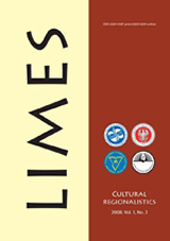
In this article Daoism is analyzed in the context of Chinese culture. It is demonstrated how the ideas of Daoism were shaped and matured in the Chinese civilization and how they reflect the peculiarities of the civilization of Eastern Asia and China. The author revives the genealogy and authorship of the main works of the Daoists (Daodejing, Zhuangzi) and analyzes their influence on the development of Daoism tradition during later periods. It is argued that Daoism was formed as the reaction towards the crisis of old Zhou culture and feeding degradation of Confucian rituals followed by the ruling circles. Different correlations are emphasized between the development of Chinese civilization and the maturation and transformation of Daoists’ ideas. It is demonstrated that Daoism is a natural product of its epoch and society; thus, it could not be dissociated from common Chinese cultural, religious and philosophical context, but rather analyzed together with it. Finally, the discussion is held on the anti-rationality, sceptical view towards mind and logical argumentation.
More...
The fourth century historian of the Roman Empire, Ammianus Marcellinus, focuses on attire and accessories that signify high rank, status and authority. In his narrative there are a number of cases where clothing and insignia feature in illegitimate or dangerous aspirations to power, and brought destruction upon the aspirants, or threatened to. An ongoing concern for Ammianus is how appropriately attired people are. He scorns the pretentious clothing of Roman nobles and bishops, took pleasure in retailing the reaction of the emperor Julian to his overdressed barber, and considered the craven Epigonius to be a philosopher only in his attire. Gallus Caesar's forced change from high to low status clothing portended his imminent execution. In his ethnographic excurses, Ammianus uses the attire of foreign peoples to define their otherness. The sixth century historian of Merovingian Gaul, Gregory of Tours, is largely oblivious to fine apparel unless it is the shining vestments of saints and angels. Humble and harsh clothing, such as skins and hair shirts denote spiritual commitment or reorientation, a change of "habit", a declaration that can be stripped away by enemies and persecutors while leaving the faith itself intact. Real ascetics eschew footwear in winter. The most striking feature of clothing in Gregory is the magical powers, to heal or punish, that it can absorb from the bodies of holy wearers. In both authors, clothes and character may be mismatched but Ammianus does not share Gregory's fondness for simple and uncomfortable attire, and certainly not his belief that a few threads from the clothing of someone long dead can work miracles.
More...
A comprehensive review on Imre Tóth's Bécstől Temesvárig [From Vienna to Temesvár] and Palimpszeszt: Szavak egy háromszög előtt [Palimpsest: Words in front of a Triangle].
More...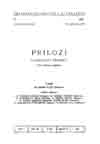
The present paper deals with the park that Husein-Pasha Boljanić played in the development of the town of Plevlja. The town of Plevlja, or Taslija:, as it was called during Ottoman rule, developed from a mediaeval market town. In the course of time, owing to its favourable geographic position, its location on the important Dubrovnik road, later better known as the Istanbul road, the town grew considerably in size. Its urban development occurred in the second half of the ·XVIth century, when it became a bigger settlement with the status of a kasaba. From 1576 onwards, it was the seat of the Herzegovinian Sanjakbey and this remained until as late as 1833, that is, for full 257 years. The town owed a great deal of what it became, and the role it played, to Husein-Pasha Boljanić an Ottoman dignitary originating from these parts. The urban, economic, and cultural development of Plevlja in the second part of the XVIth century is connected with his name. Owing to the high positions he had held, as governor of several Ottoman provinces, in the course of time he amassed a huge fortune and spent part of it building endowments in his native town. The most prominent of his endowments is the mosque in Plevlja, built in 1569/70, which in still well preserved. It is preserved as a part of the cultural heritage and still serves its original purpose. With its harmonious architecture and interior decorations, it is one of the more remarkable monuments of the Ottoman period in Yugoslavia. Its architecture and the harmony of its interior decoration, constitute an impoctant part of the cultural heritage of the Ottoman period in Yugoslavia. Three basic elements are prominent in the design of the mosque. Those are primarily. the base of the main dome, and the two smaller anes over the mihrab wall, and the third element is an interesting system of dames built over the porch. A forty-meter high, stone minaret stands next to the mosque, one of the tallest built, like the mosque itself, in Yugoslavia at that time. The minaret is interesting because, it has been repaired and redecorated several times. It is built of porous stone, and if observed from the side, it seems to be rather unstable, which it actually is not. The well-know Turikish traveller Evli Celebi compared it with the Imperial Mosque.
More...